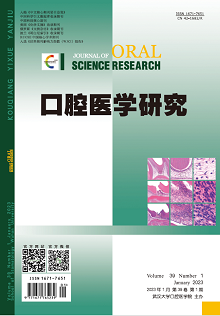|
|
Application of Low Dose Esketamine in Short Time Operation of Oral and Maxillofacial Surgery under General Anesthesia
XIN Zhijun, WANG Ning, QU Weidong, WANG Huajing, WANG Cuixia, WANG Tianfeng, LI Jianping, WANG Huaizhou
2023, 39(1):
46-51.
DOI: 10.13701/j.cnki.kqyxyj.2023.01.009
Objective: To investigate the application effect of low-dose esketamine in oral and maxillofacial surgery under general anesthesia for short time operation. Methods: Seventy-six inpatients (38 males and 38 females) with oral and maxillofacial surgery in Yantai Hospital of Stomatology were randomly divided into two groups by random number table method. Group A was the study group (Esketamine group, n=46), and group B was the control group (n=30). The patients in Group A were administrated with Midazolam 1 mg, Esketamine 0.25 mg/kg, Fentanyl 2 μg/kg, Propofol 2 mg/kg, Cisatracurium 0.2 mg/kg, and Ondansetron 4 mg. Patients in group B were given the conventional anesthesia induction regimen, and the medications were the same as those in group A except that the dosage of Fentanyl was 4 μg/kg and Esketamine was not used. After induction of anesthesia, patients in the two groups were intubated through the nasal cavity and trachea, and mechanical ventilation was performed by the anesthesia machine. Anesthesia maintenance drugs in the two groups were the same. At the beginning of the operation, all patients were given local infiltration anesthesia by the same surgeon with Attevacaine and epinephrine injection. After the patient were recovered consciousness and spontaneous breathing, the tracheal tube was removed and the patients were transferred to PACU for observation. The HR, MAP, and SPO2 of the two groups at the time of entry (T1), before intubation (T2), after intubation (T3), at the beginning of operation (T4), at the end of operation (T5), and after extubation (T61) were recorded. The operation time (T1) and recovery time (T2) were recorded. The incidence of choking reaction caused by Fentanyl during anesthesia induction, the incidence of Propofol injection pain, and the amount of Propofol used during operation were recorded, and the intraoperative and postoperative adverse reactions were recorded. Results: The incidence of choking reaction after Fentanyl application, the incidence of Propofol injection pain, the consumption of Propofol during operation, and the recovery time after operation in group A were significantly lower than those in group B (P<0.05). The HR changes of the two groups at each time point were statistically significant (P<0.05), compared with T1. The HR at T2, T3, T4, and T5 time points was lower, and the HR at T2 time point in group A was higher than that in group B (P<0.05). Compared with T1, T2, T4, T5, and T6 had lower MAP; compared with T2, T3 had higher MAP; compared with T3, T4 and T5 had lower MAP; compared with T5, T6 had higher MAP. The difference was statistically significant (P<0.05). SPO2 at T6 was slightly lower than that in group A (P<0.05). Compared with T6, SPO2 at the other five time points was higher than that in T6, and the difference was statistically significant (P<0.05). There was no significant difference in the incidence of postoperative somnolence, respiratory depression and postoperative pain between two groups (P>0.05), but the incidence of postoperative somnolence in group A was higher than that in group B, and the incidence of respiratory depression and postoperative pain in group B was higher than those in group A. Conclusion: In a short time operation of oral and maxillofacial surgery, escitalopram small doses of Esketamine anesthesia induction can significantly reduce Fentanyl choking cough response and the incidence of Propofol injection pain, reduce the dosage of Fentanyl and intraoperative Propofol dosage, smooth the intraoperative hemodynamics, maintain the time of postoperative revival, and reduce the incidence rate of intraoperative postoperative adverse reactions.
References |
Related Articles |
Metrics
|

